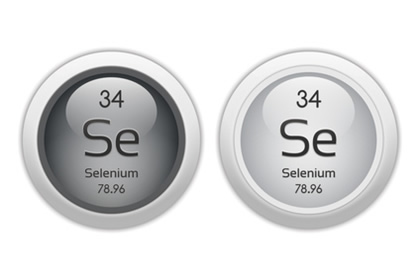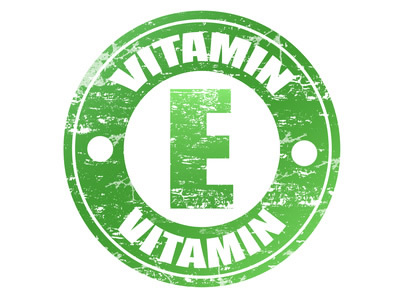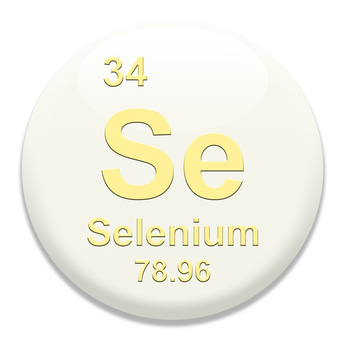Selenium, an essential trace mineral, is an critical component of antioxidant systems such as glutathione peroxidase that neutralize and protect against harm caused by free radicals and reactive oxygen species. Without selenium, certain enzymes in body cannot function, disrupting significant physiological reactions.
Selenium Facts
This mineral is needed for the production of selenoproteins, which are enzymes that work as antioxidants that protect the cells in body from free radical damage. Free radicals can damage cell membranes and DNA, and may contribute to aging and a number of conditions, including cancer and heart disease. Antioxidants can neutralize free radicals and may reduce or even help prevent some of the damage they cause. Selenium is incorporated into proteins to make selenoproteins, which are significant antioxidant enzymes. The antioxidant effects of selenoproteins help prevent cellular damage from free radicals.
Glutathione is an antioxidant that the body produces naturally. One of the body’s most important antioxidant enzymes, glutathione peroxidase is used in the liver to detoxify a wide range of potentially harmful molecules. Selenium is a vital component of the antioxidant enzyme known as glutathione peroxidase. Production of glutathione peroxidase for free radical scavenging depends upon the availability of selenium. Selenium and vitamin E have complementary however independent effects as antioxiadants in the protection of cells against the damaging effects of lipid peroxides and free radicals produced during normal metabolism. Vitamin E and selenium work synergistically. Sulforaphane and selenium have also been shown to work synergistically protecting the body cells against damage caused by free radicals. That is, although both selenium and sulforaphane have beneficial effects alone, when they are combined it is reported that their cancer fighting properties are increased thirteen fold.
Selenium Thyroid Function
Selenium is a important mineral for maintaining healthy function of the thyroid gland. Is a necessary component of three enzymes that contribute to thyroid hormone production and your thyroid contains more selenium than any other tissue in your body. (Selenium is needed in the conversion of the thyroid hormone T4 into its active version, T3). One study found that selenium supplementation had a important impact on inflammatory efficiency in thyroid-specific autoimmune disease, and reducing inflammation may limit damage to thyroid tissue.In another study, followed patients for nine months, and found that selenium supplementation reduced thyroid peroxidase antibody levels in the blood, even in selenium sufficient patients. Selenium is also essential for the conversion of T4 to T3, as deiodinase enzymes are selenium-dependent. T3 is the active form of thyroid hormone, and low T3 can cause hypothyroid symptoms. In cases of intense selenium deficiency, conversion of T4 to T3 may be impaired, prime to hypothyroid symptoms.
Immune System
Selenium is vital in strengthening the body’s immune system. Selenium stimulates the function and development of all types of white blood cells and enhances the ability of lymphocytes and NK cells, to activate and respond to invaders such as bacteria and viruses, including the flu. Protects your body after a vaccination by making antibodies that fight infections. According to the University of Oregon State this mineral regulates the action of signal molecules, yclept cytokines, which mediate your immune response. Selenium has been noted to have a important influence on both types of immunity. B and T-lymphocytes are the considerable cells responsible for the immune functions. A deficiency of this mineral was associated with decreased production and the spread of these lymphocytes across the body. Selenium, may help to improve well-being and might reduce the viral load in HIV-infected patients. Selenium supplementation was found to reduce the viral load in people infected with (HIV) . Experts at the University of Miami discovered that HIV patients taking 200 mcg (micrograms) of selenium daily for 9 months experienced decreases in HIV viral load and improvements in CD4 count compared with those who had a placebo. (January 2007 – Annals of Internal Medicine)
Anti-Cancer Effects
 Selenium has many anti-cancer effects, with effects on oxidative stress, DNA methylation and repair, inflammation, cell apoptosis and proliferation, carcinogen detoxification, hormone production, angiogenesis, and immune system. Observational studies indicate that death from cancer, including , colorectal, prostate and lung cancers, is lower among people with higher blood levels or intake of selenium. A study published in the “American Journal of Epidemiology” measured serum selenium levels in over 9,000 Finns from 1968 to 1976. The research in question; revealed that those who previously had serum selenium amounts of less than 46 ng/ml were more likely to get lung cancer.
Selenium has many anti-cancer effects, with effects on oxidative stress, DNA methylation and repair, inflammation, cell apoptosis and proliferation, carcinogen detoxification, hormone production, angiogenesis, and immune system. Observational studies indicate that death from cancer, including , colorectal, prostate and lung cancers, is lower among people with higher blood levels or intake of selenium. A study published in the “American Journal of Epidemiology” measured serum selenium levels in over 9,000 Finns from 1968 to 1976. The research in question; revealed that those who previously had serum selenium amounts of less than 46 ng/ml were more likely to get lung cancer.
In one study of 1,312 people, those who took 200 mcg of selenium as selenized yeast per day had 2/3 lower risk of developing prostate cancer throughout the 4.5-year study compared to those who took a placebo. Study results published in 2004 in the Journal of the National Cancer Institute found that people with the highest blood levels of selenium had a 34 % lower risk of abnormal cell growth and developing new polyps in the rectum and colon. A study conducted at “Harvard University“; found that men with high selenium levels have a 65 % lower chance of getting prostate cancer and recommends 159 micrograms of the mineral for the protective effect. Anticancer mechanism; 1-As anti-oxidant, can help protect the body from harmful effects of free radicals. 2- improving immune system function. 3-increasing the levels of selenium metabolites that inhibit tumor cell growth. 4-Affecting the metabolism of carcinogens. 5- Selenium has been shown to induce DNA repair and synthesis in damaged cells, to inhibit the proliferation of cancer cells, and to induce their apoptosis.
Selenium Benefits Fertility
Selenium boosts fertility in men by increasing sperm production. Blood selenium amounts have been found to be lower in men with low sperm counts. Selenoproteins enhance male fertility by increasing sperm count and protecting sperms from oxidative harm. A young and healthy man produces more than four million sperm per hour in each testicle. Selenium acts to help prevent oxidation of the sperm cell, aiding in maintaining sperm cell integrity. A study conducted at the University of Padua and published in the “Journal Science” states that a diet low in selenium could be a cause of male infertility. The reason why selenium is important for the quality of sperm is due to the fact that fights the free radicals, so it may also avoid the breakage of chromosome, which is known to cause infertility or failure to conceive and birth defects. In one Scottish study, received either a composite tablet containing selenium and vitamins and minerals or a placebo tablet to be taken daily for a period of 3 months. The sperm quality was recorded before and after the study. Showed that the motility of sperm cells in the treatment groups had increased by as much as 80 % but when the men stopped taking the tablet, their sperm cell quality was seen to fall again.
Selenium Deficiency Symptoms
When intense selenium deficiency is accompanied by severe overall malnutrition, symptoms can include weakness or pain in the muscles, discoloration of the hair or skin, and whitening of the fingernail beds.
Selenosis Symptoms
High blood levels of selenium can result in a condition called selenosis. Symptoms of selenosis include gastrointestinal upsets, hair loss, garlic breath odor, white blotchy nails, fatigue, irritability, and mild nerve damage. The Institute of Medicine of the National Academy of Sciences has set a tolerable upper intake level for selenium at 400 micrograms per day for adults to prevent the risk of developing selenosis.
Selenium Dosage
The recommended daily intake of selenium is 55 micrograms per day for adults. For pregnant or breastfeeding women, 60 to 70 mcg are recommended. The safe upper limit for selenium is 400 mcg a day in adults. In studies supporting the use of selenium for prostate cancer prevention, men took 200 mcg daily.
Types of Selenium Supplements
Inorganic forms of selenium are sodium selenite, and sodium selenate. Inorganic forms are not absorbed as organic forms. Selenium yeast and selenomethionine are an organic form of selenium. In one experiment, selenium levels in red blood cells of people receiving selenomethionine increased by 100% after sixteen weeks supplementation. Neither selenite nor selenate produced significant increases under the same conditions.
Selenium Sources in Food
Brazil nuts, Brewer’s yeast, wheat germ, garlic, sunflower seeds, chives, raisins, eggs, whole grains, brown rice, mozzarella cheese, mushrooms, mackerel, halibut, herring, tuna, cod, salmon, redsnapper, swordfish, flounder and shellfish selenium-containing foods. The amount of selenium in food depend on how much selenium was in the soil where the food was grown. Selenium is destroyed when foods are refined or processed.
 Vitamin E plays a role in your immune system and metabolic processes. Needs vitamin E to help keep the immune system strong against bacteria and viruses. Is also important in the formation of red blood cells. Vitamin E stimulates the production of NK cells
Vitamin E plays a role in your immune system and metabolic processes. Needs vitamin E to help keep the immune system strong against bacteria and viruses. Is also important in the formation of red blood cells. Vitamin E stimulates the production of NK cells  Selenium, can help build up white blood cells, which boosts the body’s ability to fight illness and infection. Selenium supplementation in individuals who are not overtly selenium deficient appears to stimulate the immune response. Selenium supplementation was found to reduce the viral load in patients infected with human immunodeficiency virus (HIV). Selenium may increase resistance to HIV by enhancing the action of T-cells and modifying their production of cytokines. In a 2007 study conducted by the University of Miami; researchers observed that the selenium group reduces HIV viral load compared to the placebo group. In addition,
Selenium, can help build up white blood cells, which boosts the body’s ability to fight illness and infection. Selenium supplementation in individuals who are not overtly selenium deficient appears to stimulate the immune response. Selenium supplementation was found to reduce the viral load in patients infected with human immunodeficiency virus (HIV). Selenium may increase resistance to HIV by enhancing the action of T-cells and modifying their production of cytokines. In a 2007 study conducted by the University of Miami; researchers observed that the selenium group reduces HIV viral load compared to the placebo group. In addition,  According to
According to  Scientific researchs indicate that supplementing with magnesium may help prevent asthma, migraine, osteoporosis, high blood pressure and cardiovascular disease.
Scientific researchs indicate that supplementing with magnesium may help prevent asthma, migraine, osteoporosis, high blood pressure and cardiovascular disease.